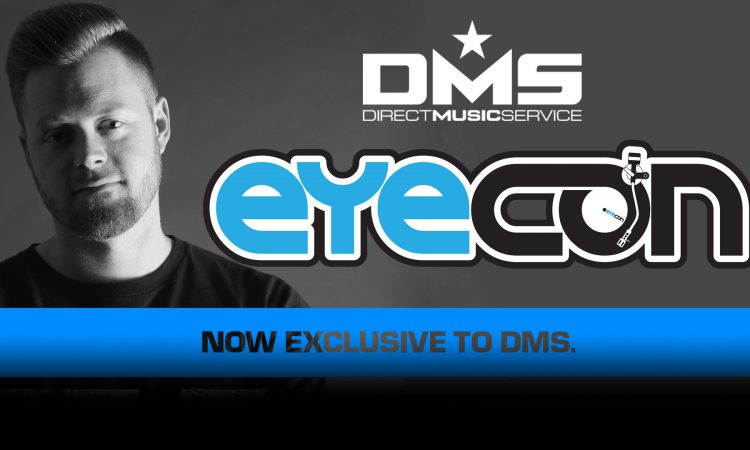Today, the song sustains as one of the most popular not just of the hyphy movement—to which it was tangentially attached—but of the West Coast in general. Few (if any) songs released in California in the 2000s have survived in as many DJ bags and Serato folders. The three minute, two-verse song from a living rap legend has a very rare quality that eludes even certain classic hip-hop singles: true cultural staying power. But how did it get to that point?
Produced by Lil Jon, “Blow the Whistle” was released March 7, 2006, and became the lead single for Too $hort’s album of the same name, released in August of that year. At the time, hip-hop was going through its last burst of major Billboard domination—songs like Lil Jon’s “Snap Yo Fingers,” Chamillionaire’s “Ridin,” Dem Franchize Boys “Lean Wit It, Rock Wit It,” Young Joc’s “It’s Goin Down,” and many more were lodged in the Top 40. But Too $hort’s signature anthem of the 2000s only reached No. 70 on the R&B charts, and never even touched the Hot 100—hardly a major radio single.
The song was recorded in Atlanta at Blue Basement Recordings, and in Miami’s Circle House Studios. At the time, Lil Jon had been working on records with E-40 and Keak Da Sneak, in what was being branded as the national launch of the hyphy movement. Hyphy was a regional movement originating in the Bay Area, one that had its own uptempo beats, its own dances, its own slang, its own drugs (the movement was in part ecstasy-inspired). It never quite swept the country—although it did penetrate reasonably far into the Midwest. It reached a moment of media recognition in the mid-2000s, and launched a number of big singles. But eight years later, one song has stayed in the popular consciousness. And it wasn’t the one many predicted.
“That same week, I did ‘Tell Me When To Go,’ ” Lil Jon told Complex, referring to E-40’s big hyphy record of the time. Lil Jon was going through different sounds when he heard a familiar tone. “I was like, ‘Oh shit, that sounds like the same bass from ‘Freaky Tales.'” Lil Jon quickly made a beat with it, and hit Too $hort the next time the rapper was in Atlanta. “I gave him that beat. Later on, he told me he wanted me to add some more stuff to it. So I went by his house, added some more stuff to the track. I liked the beat really raw. Just the bassline and the chorus. We had added these little keyboard parts and shit. Me and him went back and forth. He was like, ‘Naw man, we gonna keep it in!’ He won that little battle.”
No one predicted the song’s success, Lil Jon included. “I thought it was cool. But I never expected the song to be as big as it was.” At that point, the media’s focus was on “hyphy” and its cultural context—the dances, “ghostriding the whip,” and “thizz.” With the death of Mac Dre in 2004, the movement had lost its most prominent leader. But it still had momentum, and was moments from attaining mainstream attention. Lil Jon first heard about hyphy while working with E-40 in Atlanta. “I liked the song Keak Da Sneak had, “That’s My Word” [later retitled “Super Hyphy”]. I thought he was Mexican by how he sounded on the record. When I was in the studio working with 40, I was saying, ‘What’s up with that Mexican dude, Keak Da Sneak?’ He was like, ‘He ain’t Mexican.'”
As it turned out, Keak was in Atlanta at the same time; he canceled his flight back to the Bay in order to stick around and record with Lil Jon and E-40. “40 always had some youngstas around him,” Lil Jon says. “Younger generation. They were the ones who briefed me and told me what the hyphy shit was. Showed me videos on YouTube, sideshows and all that shit.” And so “Tell Me When To Go” was born.
“We took a week and filmed all of the shit from the hyphy movement and put all of that in the video. And once America saw the video, that’s once all of these people started ghostriding the whip, and doing all the shit he was talking about in the video. I thought the fact that we showed the world this culture, that would be the biggest record forever. And then there’s the energy of that record. I thought ‘Blow the Whistle’ was cool. It was dope. But I definitely didn’t think it was gonna be a record we’d still play eight years later.”
“Blow the Whistle”‘s rise was much slower, and less media-driven. DJ MoonDawg of WGCI-FM Chicago was doing his college radio show at University of Illinois-Chicago when the song was released. The song was not an instant hit.
“It wasn’t an immediate impact here for us,” MoonDawg recalls. The record, released in March 2006, didn’t really start to grow until 2007. “The following year it started to really pick up. In Chicago, you go out to the clubs and everybody out in the club is like, ‘What’s my favorite word? BIIITCH!'”
“Tell Me When To Go” wasn’t an instant success in the Midwest either, says MoonDawg; it wasn’t until Kanye West jumped on the remix that that song started to get regular local play.
“I think that record is what allowed the Too $hort record to come along and piggyback off it. At least for us here. You had two records that had a hyphy feel that you could play to not throw off your set.”
All the same, the song still had an uphill climb in certain areas—particularly New York, says Big Von, a Bay Area-based DJ from KMEL-FM.
“If you went anywhere on the West Coast, Down South, Midwest, they were fucking with it. New York didn’t really fuck with it. It got to the point where I was at a concert. Jay Z took it. That’s when you know it’s official.” Jay Z remixed the song in 2008 during the first round of the NBA playoffs between the Cleveland Cavaliers and the Washington Wizards, in response to DeShawn Stevenson’s comments about LeBron James being “overrated.” And it started off with Jay paying tribute to the city that birthed the song. “Oakland like Brooklyn. $hort! Yay area. They showed me so much love when I was down there, I had to get hyphy on this one.”
At that point, the song became a national phenomenon. “Too $hort was in New York one time,” says Big Von. “They don’t play a lot of Too $hort records in New York. He was in the club one time, and they played it. He was tripping, because he had been in New York a thousand times, and they never played his music. We heard it, he was just amazed. He had to make the announcement, ‘Yo, I’ve been here so many times and I’ve never heard my shit!’ He performed it from the booth [that night].”
Since that time, the song has sustained as a true club classic. While other, more popular records have since fallen by the wayside, “Blow the Whistle” remains as effective of a floor-filler as any record released since. But what is it about the record that has such lasting appeal? Big Von had his own theory. “When you hear it from beginning to end, the beat comes in, you’re like, ‘Oh Shit, what’s this?’ Even his lyrics. He killed it. He address the ‘bitch’ word. Niggas took it and made a million bucks off it, and he says ‘thank you, I’m proud of you g.’ That one’s my favorite. ‘What’s my favorite word?!’ He’s been saying that shit for forty years. Everyone waits for that part to scream. It’s complete. You know how sometimes the stars align, you make that record and you just get it? That’s it.”
“I think a record has to embody the time period in which it was released,” suggests DJ MoonDawg. “If I’m listening to a Red Hot Chili Pepper record, I listen to it because I was exposed to it when I was a kid from my best friend’s brother who was into rock. When I hear it, even to this day, I jet back in time. It embodies the memories you had when those songs were out in your life.
“That was a super-clubby time in music. A lot of the records were very club-driven. The hyphy movement was growing. When people hear that record in the club, as soon as the beat drops, girls will just start standing up and dancing. Even if you’re playing a Gucci record right now, and there’ll be a little head bop. But you drop [‘Blow the Whistle’] in there? I think it just brings back the feeling of that time period, when people were in the clubs actually still dancing, and not being all bourgie and posted up, just nodding their head and doing the “turn-up” dance everyone does now, standing around.”
Dance trends in clubs, though, will come and go; DJ Mustard’s success suggests uptempo dance anthems have returned with a vengeance. With “Blow the Whistle” there was another factor at work, something universally appealing—something that translates as easily to a spin class as it does the club. The song’s long, circuitous path to club standard wasn’t something anyone predicted, and relied as much on luck, timing, and cosigns as its own qualities. The “test of time” is arbitrary at best; plenty of great songs don’t retain their spot on a DJ’s laptop—or make the transition to the average American’s workout playlist—and end up forgotten. But given the shot, “Blow the Whistle” not only survived, but thrived.
DOWNLOAD ON DMS



